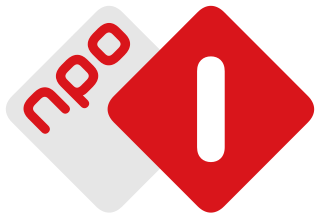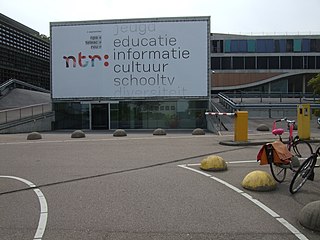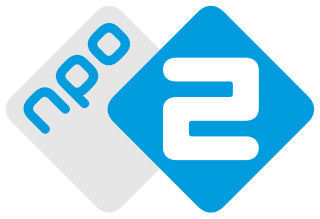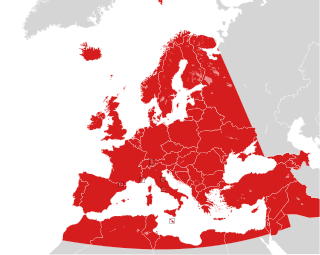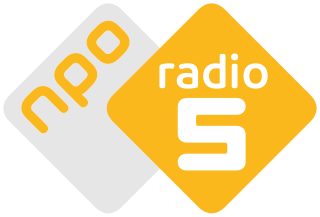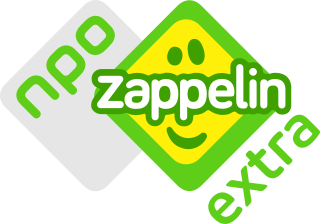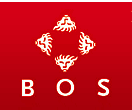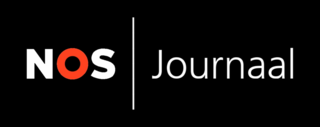History
The closed system (1920–1960)
Since the very beginning in the early 1920s, public broadcasting in the Netherlands has been split into different broadcasting associations with their members composed of listeners and viewers. These associations were based on the different ideological sections of Dutch society, called Verzuiling (pillarisation). Catholics, Protestants and Socialists were the first groups to create their own institutions, including schools, hospitals, trades unions and political parties. When radio in the Netherlands started in the 1920s the existing groups quickly created their own broadcasting associations, producing programmes for the primary radio network, Hilversum 1 . The first to start was the liberal AVRO , founded as radio broadcaster Hilversumsche Draadlooze Omroep (HDO) by the NSF transmitter factory in Huizen on 8 July 1923. The first regular radio broadcasts started on 21 July 1923. [3] Airtime was rented to the various religious and political radio organisations—the Protestant NCRV , the Roman Catholic KRO , the Socialist VARA and the liberal Protestant VPRO .
Under the system of pillarisation in place at the time, each audience group was faithful to its pillar's broadcasting company. The programmes were funded by the associations' members. KRO and NCRV started their own station in 1927 with a transmitter also located in Huizen and built by the NSF.
In 1930 the government regulated equal airtime for all organisations on the two stations, and the semi-public broadcasting system was born. As a result, AVRO lost most of its airtime then (50%) to VARA and VPRO.
The radio licence fee was introduced by the Nazi occupation during World War II; the different broadcasting groups were urged by the Government to co-operate more with each other, and the Netherlands Radio Union (Dutch : Nederlandse Radio Unie) was formed, producing joint programmes.
The Netherlands Radio Union was one of 23 founding organisations of the European Broadcasting Union (EBU) in 1950. (The role of the Dutch representative to the European Broadcasting Union was later inherited by NOS, formed in 1969, and has since September 2002 been the responsibility of NPO.)
1951 saw the introduction of television, and a similar union was founded: the Netherlands Television Foundation (Dutch : Nederlandse Televisie Stichting), supplying studios and facilities for the associations. These broadcasts would air on the Nederland 1 channel; a second channel, Nederland 2 , was launched in 1964.
The closed system opens up (1960–1990)
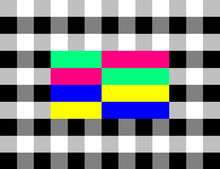
With the arrival of illegal offshore commercial radio stations, such as Radio Veronica in 1960 and Radio Noordzee in 1964, Hilversum 3 was launched in 1965 to provide a legal alternative and to steer audiences towards the public service channels. Hilversum 3, along with the other two networks, were renamed as Radio 1, Radio 2 and Radio 3 towards the late 1980s.
In 1967 a Broadcasting Act was passed, providing for an official framework to supply the public with information, entertainment, culture and education, with time allocated to appointed broadcasting associations based on the number of members each association had. This allowed other organisations access to the public system, including the former commercial unlicensed broadcasters TROS and Veronica and the evangelical Christian EO to diversify programming. Advertising revenue was added, handled by an independent agency called STER.
The Netherlands Radio Union (NRU) and the Netherlands Television Foundation (NTS) merged to form the NOS , charged with providing news and sport programmes as well as with the general coordination of the public system. [6]
A new Media Act in 1988 meant that broadcasters were no longer obliged to use production facilities supplied by the NOS. These facilities were spun off into a new private company, NOB. Programme quotas were introduced: Associations had to produce:
- 25% news and information programmes
- 25% entertainment and general programming
- 20% cultural
- 5% educational
A new media regulator (Commissariaat voor de Media) was created to regulate the public and private networks. The regulator could impose fines, with a programming fund designed to encourage cultural broadcasts. New rules for the cable industry were also introduced: the public networks were designated must-carry status.[ clarification needed ] [6]
The start of private media (1990–2000)
In anticipation of the launch of new commercial satellite channels, a third television network, Nederland 3, launched in April 1988. Luxembourg-based RTL-Véronique began broadcasting in October 1989. In 1992, the government of the Netherlands legalised commercial television, and a number of new commercial channels were established. As a result, the market share of public television had fallen from 85% to 50% by 1994. Veronica decided to leave the public system after 20 years to become a commercial broadcaster. By 1996 the arrival of more private channels from RTL and SBS had further reduced the market share of the public networks to 40%. [6]
With the change in the television landscape, changes were made to strengthen the public sector. Its financial revenues were improved by an increase in advertising time and the indexation of the licence fee to the cost of living. In 1995 the programming duties of the Nederlandse Omroep Stichting (Netherlands Broadcasting Foundation, NOS) were split in two, with the creation of the NPS (Netherlands Programming Foundation). [7] NOS was charged with providing news, sport and coverage of important live events, while the NPS provided cultural and children's programming.
The previous NOS management was replaced by a three-person board, charged with developing strategies and responsibility for all public output. Programming co-ordinators were appointed for each of the television and radio networks, and channel identities were created, largely replacing the varying on-air presentation of the pillar broadcasters. The broadcasting associations also have a degree of input through a supervisory board.
The market share of the public networks stabilized in 1999 at 38%, [6] with the entry of a new broadcasting association, the first in 25 years. BNN (Bart's News Network, later Bart's Neverending Network) replaced Veronica as programme supplier to teenagers and young adults.
Diversification, expansion and the creation of the NPO (2000–2010)
Under the new "open system" any company can become a broadcasting company and obtain radio and TV airtime. The only requirement is to request official status from the government and to have enough members[ clarification needed ]. Broadcasting companies in the Netherlands must ensure every year they have enough members[ clarification needed ] to retain their official status, and most of them sell TV guides or other magazines and make[ clarification needed ] every subscriber a member of their organization.
Many people[ who? ] question whether the current system is still appropriate in this age of digital broadcasting. There were plans in the run-up to the 2002 general election to change the way broadcast companies are selected, and to abolish the member-based system completely. Vocal critics included Pim Fortuyn, the assassinated leader of his own right-wing party. However, currently the system is still the way it always has been.
Prior to the 2002 reorganization, the Dutch public broadcasting system was managed by NOS. In 2002, it was put under control of "Nederlandse Publieke Omroep" (Dutch Public Broadcasting foundation), abbreviated as NPO. [8] According to Article 2.2 of the Dutch Media Act of 2008 [ nl ], NPO was appointed as the governing organization of the public broadcasting system of the Netherlands until 2020.
From September 2010, Minister of Culture and Education Ronald Plasterk approved the entry of new broadcasting associations PowNed and Wakker Nederland (WNL) into the public broadcasting system. Another association, MAX, was given full recognition and can increase its broadcasting hours. Conversely, LLiNK was withdrawn and no longer has access. Meanwhile, the NPS, Teleac and the RVU institutions merged into one public broadcaster, the NTR, delivering cultural, educational, current affairs and children's programmes to the public system. [9]
Cuts to the public system (2010–present)
On 18 January 2010, Henk Hagoort, chairman of the NPO Management Board, announced a scaling back of the number of broadcasting associations using the public airwaves to 15 by 2015. [10] He also warned of the threat of political parties which could influence programming in the public broadcasting system.
In September 2010 cuts to the public system took effect, with the existing eleven full-time broadcasting associations facing decisions about their futures. Part-time Islamic broadcasters NMO, NIO and the merged SMON were all withdrawn from the public system.
In March 2012, NPO announced the closure of two of its digital television channels, Geschiedenis 24 (History 24) and Consumenten 24 (Consumer 24) on 1 April. History programmes transferred to Holland Doc 24 and consumer programmes are looked after by VARA via an online portal. [11]
Future plans (from 2016)
From 2015, Netherlands Public Broadcasting will face a budget shortfall of 200 million euro. To address this, the number of broadcasting associations within the public system is to be reduced. Mergers and/or cooperations have been confirmed between existing broadcasting associations:
| Broadcaster | Type | Programming | |
|---|---|---|---|
| 1 | KRO-NCRV [12] [13] [14] | Member-based | Catholic/Protestant-leaning |
| 2 | BNNVARA [15] | Member-based | Youth and social awareness |
| 3 | AVROTROS - PowNed [16] | Member-based | Popular and general entertainment |
| 4 | EO [13] | Member-based | Protestant |
| 5 | MAX and WNL [17] | Member-based | The elderly (MAX) and right-wing/conservative (WNL) |
| 6 | VPRO and HUMAN [18] | Member-based | Cultural, socially liberal |
| 7 | Omroep Ongehoord Nederland! [19] | Aspiring member | Unheard Netherlands |
| 8 | Omroep ZWART [19] | Aspiring member | Inclusivity |
| 7 | NOS, Omrop Fryslân, [20] Zendtijd voor Politieke Partijen and Socutera [21] | Task-based | News, sport, events, political broadcasts, regional |
| 8 | NTR [17] | Task-based | Cultural, education, diversity |
| 9 | Ster | Other | Advertising |


